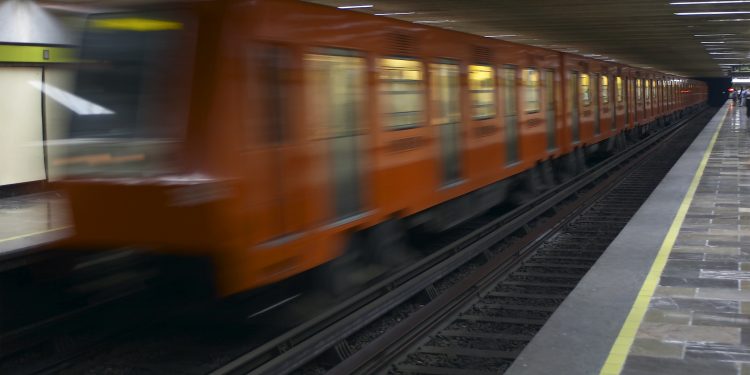The brand new Line 12 of the Mexico City Metro system, the “Golden Line,” began operating at the end of October, and has received some mixed reviews from users.
As was to be expected, the line had some teething problems, and those—also not surprisingly—made more “news” than what went right with the line.
The $2 billion project took several years to complete, connecting the southeast corner of the capital to the west, crossing four south-north lines along its 24-kilometer (15 mile) path.
The first thing to notice about the new line is the change in type of trains. The original Metro trains, of French design, have tires and run on flat tracks. Line 12 trains, of Spanish design, have traditional metal wheels, and the power is supplied to the trains by an overhead beam. (One of the disadvantages of the trains that run on tires is that they tend to slip on outside lines during the rainy season, particularly as the trains get older, and consequently the trains are slowed down to a crawl, with a 40-minute trip sometimes taking an hour or more).
Another thing the Metro rider might notice on the new line is the absence of any vendors in the stations or on the trains. City authorities decided that the new line ought to be free of vendors or beggars. Many people wonder how long this will last, particularly since nothing seems to be done about the increasing number of vendors on other lines, which can on occasion become quite an annoyance for commuters.
The new trains themselves have a number of advantages over the earlier models. The plastic seats run along the side of the cars, making the best use of the available space, and are more comfortable than the metal seats on Line 2. There are a number of specially-reserved fold-up seats for people who need them at the ends of each train, but unfortunately not everyone respects this. The cars have video screens installed which feature ads targeted at Metro commuters.
There are a few problems with the new line, which hasn’t yet received all its trains. With 20 trains at present running along 48 kilometers of track (24 kilometers each way) that makes about one train every four minutes, assuming perfect coordination and no delays—a rather big assumption. This means that at present during rush hour, there aren’t yet enough trains to handle the demand on the line, and of course people complain about this. The overcrowding should ease as more trains are added.
One problem that may be harder to solve is the reduced number of exits from the platforms at the stations where the line connects with other lines. With hundreds of people getting off a crowded train, bottlenecks of people form at the exits, which feature only two stairways at some stations.
The line, promoted as the most important infrastructure project of recent years in all of Latin America, also has its political anecdote.
The project was the brainchild of the Mexico City Mayor, Marcelo Ebrard, whose political party was at odds with that of President Felipe Calderón for much Calderón’s tenure. That meant the city government, and not the federal government, would take the credit for the most significant public work of the administration. However, city finances were insufficient to cover the full cost of the line, and federal funds were necessary to complete it. In the end, common sense prevailed. The federal government put up a large part of the money, and both the mayor and the president attended the inauguration.
See Also: Transportation in Mexico
Mexico in your inbox
Our free newsletter about Mexico brings you a monthly round-up of recently published stories and opportunities, as well as gems from our archives.

